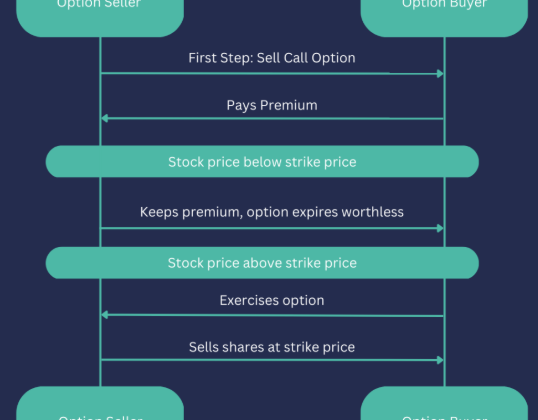
When it comes to commercial real estate investing, understanding the differences between preferred equity and common equity is crucial for making informed decisions. Both offer unique advantages and disadvantages, and each type of equity carries different levels of risk. In this post, we’ll explain what preferred and common equity are, their risks, benefits, and how they fit into the capital stack.
What Is the Capital Stack in Real Estate?
The capital stack refers to the layers of financing used in a commercial real estate transaction. These layers range from the senior debt at the top, which carries the least risk, to the common equity at the bottom, which holds the most risk. Between these layers are mezzanine debt and preferred equity investors.
- Senior debt: Lenders who provide the most secure form of capital, often with the first claim on the property in the event of default.
- Preferred equity: Investors who are higher in the capital stack than common equity holders but do not have the same protection as debt holders.
- Common equity: Investors who assume the highest risk but stand to gain the most from increases in property value.
The position within the capital stack determines the risk level and the potential return for each type of investor.
Preferred Equity vs. Common Equity: Levels of Risk
Risk in the capital stack is determined by the seniority of the investment. The higher the seniority, the lower the risk.
- Preferred equity investors are higher in the capital stack than common equity holders, which means they get paid before common equity holders in the event of a default or bankruptcy. However, they still face risks, especially if the property value decreases.
- Common equity investors are the last to receive payment and are often the first to lose their investment if the property goes into default. As a result, common equity carries more risk but also offers the potential for higher returns.
In addition, preferred equity often includes an arrearage feature, meaning if the preferred dividends aren’t paid on time, the unpaid amount accumulates and must be paid before any dividends are given to common equity holders. This feature is not typically available to common equity investors.
Advantages of Preferred Equity
Preferred equity offers several benefits, making it an attractive option for investors who prefer more stable and predictable returns.
- Earlier Cash Flow: Preferred equity typically provides a higher dividend yield compared to common equity, offering investors more cash flow earlier in the investment period. This can be particularly appealing for institutional investors looking for steady income.
- Percentage of Annual Income: In some cases, preferred equity investors can earn a portion of the property’s annual income. For example, if the property generates income above a certain threshold, preferred equity holders may receive a share based on their stake in the property.
- Steadier Returns: Preferred equity is generally more stable than common equity because preferred equity holders receive dividends before common equity holders. These dividends are also less likely to be reduced or eliminated, providing a more consistent income stream.
- Ownership Interest: Preferred equity holders still have ownership interests in the property, but unlike common equity holders, they typically don’t have voting rights. This makes them silent partners in the investment.
Disadvantages of Preferred Equity
Despite its benefits, preferred equity also has certain drawbacks that investors need to be aware of.
- Risk of Capital Loss: Although preferred equity is less risky than common equity, there is still the possibility of losing capital if the project underperforms or if the property is not profitable.
- Unsecured Ownership Interests: Preferred equity investors do not have a secured claim to the property. In case of bankruptcy or liquidation, they may not receive ownership of the real estate, unlike debt holders, who have a claim on the property.
- Limited Upside: Preferred equity typically offers fixed dividend payments, which means that investors won’t benefit from increases in the value of the property. If the property value grows significantly, common equity holders will see higher returns, while preferred equity holders will not benefit from this appreciation.
Advantages of Common Equity
Common equity is the most common form of investment in commercial real estate, offering significant potential for high returns.
- Higher Potential Returns: Common equity investors often enjoy the highest potential rate of return because they are last in line to receive payouts but can benefit from the full appreciation of the property value.
- No Cap on Returns: Unlike preferred equity, which offers fixed dividends, common equity has no cap on potential returns. This means that common equity holders can earn significantly higher returns if the property appreciates in value.
- Upside from Property Appreciation: One of the main advantages of common equity is the opportunity to benefit from increases in property value. As the property grows in value over time, so does the equity stake, offering substantial wealth-building potential.
- Long-Term Growth and Profit: Common equity holders have the potential for long-term gains, especially if the property’s value appreciates significantly over the years. Investors can also receive dividends, which can increase over time if the property performs well. Additionally, common equity holders have the option to defer taxes using strategies like a 1031 Exchange.
Disadvantages of Common Equity
While common equity offers substantial returns, it also comes with its share of risks.
- Last in Line for Payouts: In the event of liquidation or bankruptcy, common equity holders are the last to receive payouts, often receiving nothing if the property is sold or foreclosed. This makes it the riskiest position in the capital stack.
- Highest Risk of Loss: Common equity investors face the highest potential for loss. If the property underperforms or the market crashes, common equity holders may lose their entire investment.
- No Secured Ownership Interest: Like preferred equity, common equity investors do not have secured claims on the property. In case of a default or liquidation, common equity holders are unsecured and may lose their capital.
Is Preferred Equity or Common Equity Right for You?
Choosing between preferred and common equity depends on your investment goals, risk tolerance, and desired returns. Preferred equity might be more attractive if you seek steady income and lower risk, while common equity is suited for those looking for higher returns and the potential for long-term growth.
Many investors diversify their portfolios by allocating capital to both types of equity, balancing the steadier returns of preferred equity with the higher potential upside of common equity. However, it’s essential to consult with a financial advisor or real estate expert to ensure you understand the risks and benefits of each option.









